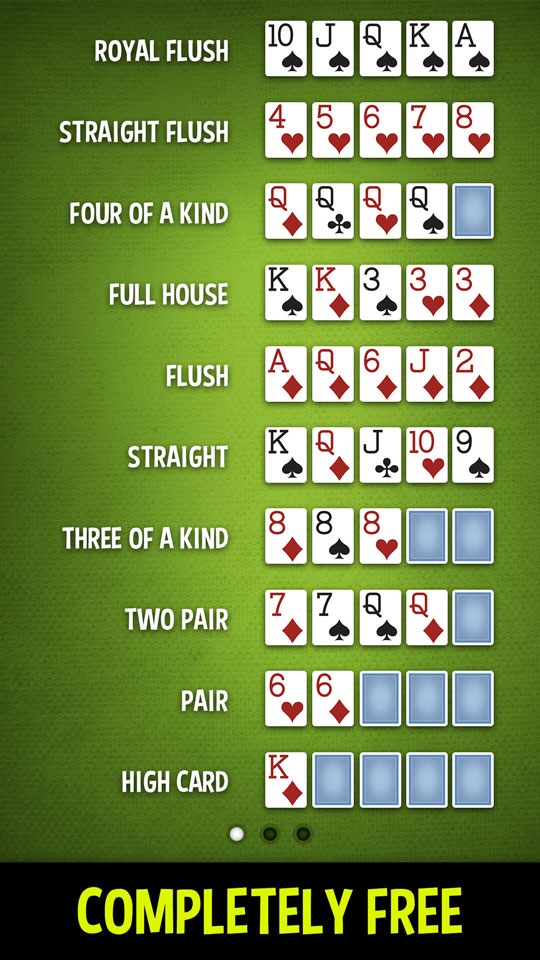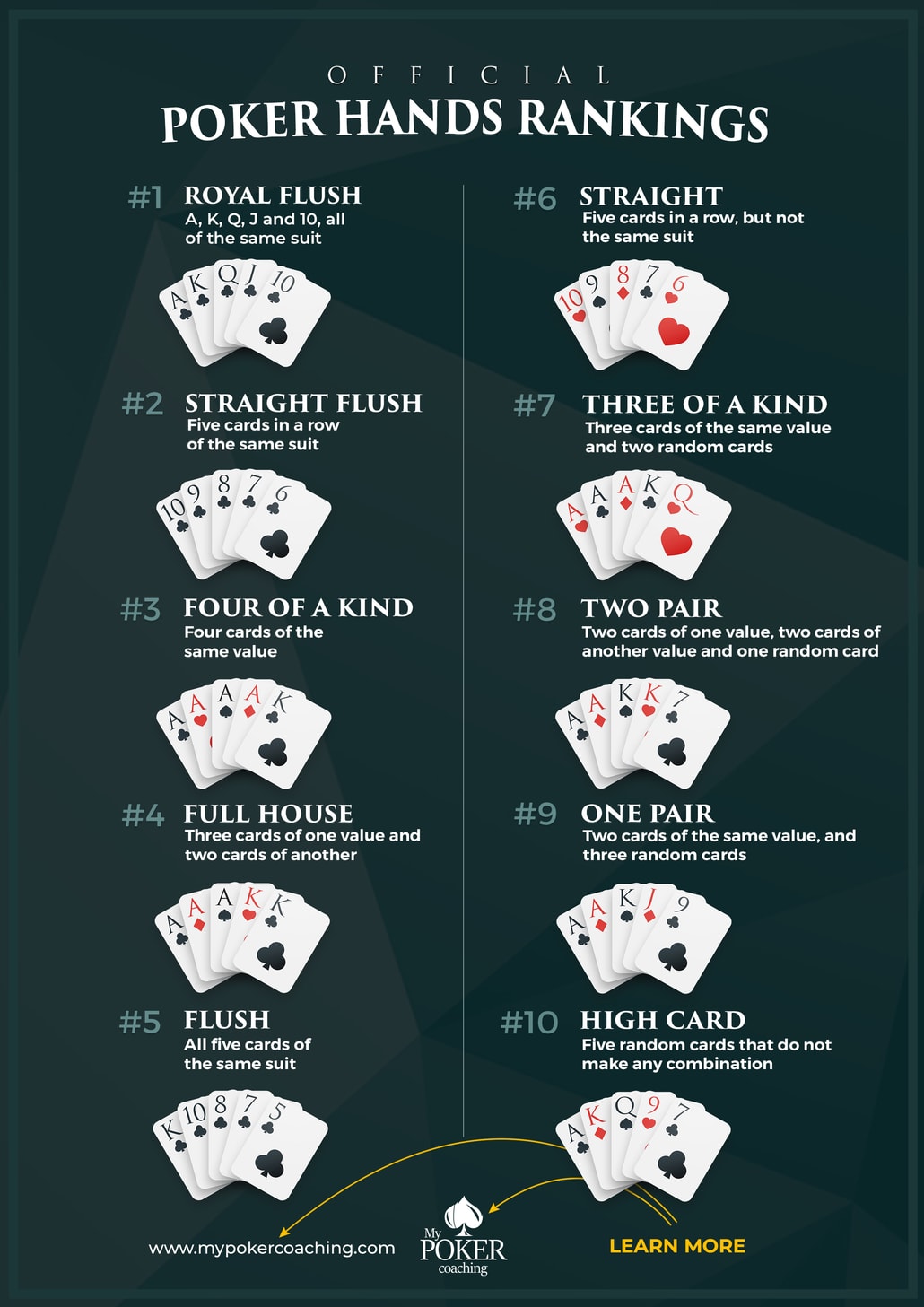Hand Vs Hand Poker
It’s incredibly difficult to put your opponent on an exact hand. Therefore, most of the time, you have to think in terms of poker hand ranges. Even though you don’t have a specific idea of what cards are in your opponent’s hand, a hand range gives you something to work with.
Poker Hand Ranges. It’s incredibly difficult to put your opponent on an exact hand. Therefore, most of the time, you have to think in terms of poker hand ranges. Even though you don’t have a specific idea of what cards are in your opponent’s hand, a hand range gives you something to work with. 1 day ago This is a discussion on $5 NLHE 6-max: Quads vs Quads within the online poker forums, in the Cash Game Hand Analysis section; Villian Stats (VPIP/PFR/AF): 35/20/2.8 Hi everyone, so. TOP 5 MONSTER VS TRASH POKER HANDS EVER!Help us to 200K Subscribers - us: Twitter: Facebook: h.
Beginners may not have thought of this, but winning players make almost all their decisions based on poker hand ranges and knowing the different types of poker hands you might get is extremely important. Your every action changes an opponent’s idea of your hand range and vice-versa. You can have anything when cards are dealt but every fold, call or raise tells something about the range of hands you can have.
The is the best possible hand you can get in standard five-card Poker is called a royal. In poker, if no winner can be determined with a tiebreaker, then the hand is declared a tie and the tied players split the pot. The most frequent time there is a tie in poker is where the board is paired twice and two or more players each have the same high card. Examples of tied hands: One player has AK and the other has AQ and the board is J2255.
Most players fail to make the effort to figure out a hand range. However, every player who intends to be a long-term winner needs to know how to analyze and weight hand ranges.
Betonline Poker - #1 in the U.S
- Accepts U.S. customers with large player pool
- 10+ years with a strong reputation
- $2,500 deposit bonus
Poker Hand Combinations
How to use a poker range calculator? In order to be able to calculate a range of hands, the first thing you need to keep in mind is how many possible hand combinations there are for different types of hands:
| Hand Type | Combinations |
|---|---|
| Pocket Pairs | 6 |
| Non-Paired | 16 |
| Suited Non-Paired | 4 |
| Off-Suit Non-Paired | 12 |
So what does the table tell you?
- There are more variations of non-paired hands than pocket pairs.
For example, if you think an opponent’s hand range is 44 and 87, it’s more likely for the opponent to have 87 (16 combinations) than 44 (six combinations). - There are four combinations of suited non-paired hands and 12 combinations of off-suited non-paired hands. Knowing this makes it easier to calculate the likelihood of an opponent having a suited hand.
Using Hand Ranges in Poker
Here’s a scenario: you raise with AK-offsuit pre-flop and the opponent calls. You know the opponent calls in this situation 15% of the time. According to Equilab, here’s the top 15% of poker hands (although someone’s 15% can include different hands–for example, one might play 66 rather than KT-offsuit):
Top 15% of all poker hands (in blue). |
You have AK-offsuit, and you’d like to figure out how your hand matches up against the opponent’s hand range. So you use Equilab to calculate it and you see that AK-offsuit has 61.36% equity while the opponent has 38.64%. Sounds like a good deal for you.
Most players assume they’d do well but they have never thought their opponent’s hand range through and evaluated it against their own hand. Once you get the habit of using an equity calculator, you’ll be surprised by how much or little equity certain hands have against certain hand ranges.
Your idea of an opponent’s hand range changes with every decision the opponent makes. So let’s say, instead of calling your raise, the opponent decides to raise, which he does 3.75% of the time. Here’s the hand range:
Top 3.75% of all poker hands (in blue). |
Based on the opponent’s hand range, he’d now have ~57% equity. When he just calls, you’re still ahead of his hand range; when he re-raises, your AK-offsuit is in trouble.
Weighted Hand Ranges
But an opponent may play certain hands out of his hand range more often than others. For example, instead of re-raising 100% of the time with 99, he may only do so 50% of the time. Based on your reads, you assign more or less weight to a certain hand in a range of hands and, just like before, calculate how your hand does against it.
And it can make a big difference. For example, an opponent’s hand range is AA and QQ while you have KK. In case the opponent plays both AA and QQ 100% of the time in that situation, you might consider your chances of winning poker around 50%, but if the opponent plays AA 100% of the time and only plays QQ some other % of the time, your chances of winning take a hit. You’d be going against AA the majority of the time.
How to Calculate a Weighted Hand Range
So let’s say you have JJ pre-flop and you’re up against an all-in raise. You think the opponent could do this with AA, KK, QQ, AK, and AQ. How many hand combinations do you beat and how many beat you?
Hand combinations that beat you:
| Hand | Combinations |
|---|---|
| AA | 6 |
| KK | 6 |
| 6 | |
| Total | 18 |
Hand combinations that you beat:
| Hand | Combinations |
|---|---|
| AK | 16 |
| AQ | 16 |
| Total | 32 |
You beat 32 of your opponent’s hand combinations and the opponent beats you with 18 combinations. By using Equilab, we can see that your equity is 42.60%. If, however, the opponent only has AK and AQ 50% of the time (which is a relatively realistic scenario), here’s what happens:
Hand combinations that beat you v2:
| Hand | Combinations |
|---|---|
| AA | 6 |
| KK | 6 |
| 6 | |
| Total | 18 |
Hand combinations that you beat v2:
| Hand | Combinations |
|---|---|
| AK | 8 |
| AQ | 8 |
| Total | 16 |
And by using Equilab, we can see that our equity drops to about 36%. That’s a dramatic difference in the long run. which can make the difference between whether you should call or fold, which obviously depends on pot and bet sizes and how much money you and your opponent have left.
Learning to weight poker hand ranges is worth your while. Weighting hand ranges gives you more accurate information about your chances in different poker situations as long as you determine the hand combinations right. Like in almost every skill game in the world, the more complicated a theory is, the harder it is to execute and the more profitable it is when executed perfectly. With a little bit of work and thinking you’ll get more accurate calculations.
How to Manipulate Hand Ranges
The basic idea of manipulating hand ranges is To make strong hands look weak and the other way around. This way we can get the most out of our hands because either the opponent likes to call when we’ve got a tight range of hands – meaning we can get the money in with a strong hand – or the opponent likes to fold when we’ve got a loose range, meaning we can get the opponent to fold when we have a weak hand.
One of the biggest problems is to recognize what strong and weak play is in an opponent’s opinion. Obviously Lisa and Bart are going to read situations differently and they’re going to end up having different ideas of who’s weak and who isn’t. Another problem is to know who’s been paying attention to the game and who has other things to focus on. You have to rely on the idea that the opponent follows the game at least semi-closely and adjusts his play optimally against your range of hands. Usually it’s easy to tell who’s following the game, though.
The third problem would be to understand how an opponent reacts to the way you play. There are different ways for players to react, obviously, since otherwise all the players would play the same way. Some make logical decisions, some don’t.
All of these points must be taken into consideration when manipulating hand ranges in poker. It’s of no use to build an image for yourself if the opponent pays no attention to the game. It might be counterproductive to build an image if the opponent reacts unlike you expected. You’ll always have to consider these points when building a player image and manipulating your range.
Common Mistakes – Being Optimistic
The biggest mistake when figuring out a hand range is to have too much optimism when making decisions. For example, always believing the best and creating hand ranges that are convenient for you is a huge mistake and misses the whole idea. It’s not just about winning; it’s also about losing the least possible. By realizing your hand range is unprofitable against an opponent’s hand range, you avoid losing money.
Giving Up
Losing is a part of poker and beating most of an opponent’s range doesn’t mean you’ll win all of the pots. You’ll lose a certain percentage of them, and you may even have an extremely unlikely run of losses but such is variance.
Other strategies
If you are looking for different strategies go ahead and visit our main page.
You now have five cards to make an assess of your hand with; your two hole cards and the three community cards. But remember, the flop may also have helped an opponent, so you also need to consider the number of other players involved, as well as the texture of the flop, before determining how you want to play from here.
Firstly, let’s look at determining the strength of your hand.
Categories of Post-Flop Hands
After the flop, hands tend to fall into three categories: ‘made’ hands, ‘drawing’ hands and ‘unmade’ hands.
‘Made’ Hands
Poker Hands What Beats What
A ‘made’ hand is one that has improved significantly on the flop and has only a slight possibility of further improvement.
Hand Vs Hand Poker Odds
If you had a pair of pocket Aces preflop and another Ace falls on the flop, you now have top set (Three of a Kind) and your hand can only realistically be improved by seeing the final remaining Ace (highly unlikely) or the board pairing to give you a Full House.


The important part to note is that this is already a very strong – or ‘made’ – hand.
Made hands can themselves be separated into three groups:
Best Low Hand In Poker
Monster hands: Better than one pair on the flop
Examples:
A♠J♠ on a flop of A♥J♦2♣
3♠3♥ on a flop of A♠K♦3♦
Very strong hands: Very good one pair hands such as top pair with top kicker or an over-pair to the board
Examples:
Q♠Q♦ on a flop of 10♠4♣4♦
A♠K♠ on a flop of A♦10♦4♠
Marginal hands: These are hands like middle pair
Examples:
A♠10♦ on a flop of K♠10♥2♠
J♣J♦ on a flop of Q♣8♦3♥
Drawing Hands
‘Drawing’ Hands are hands that have connected with the flop but still need to improve.
For example, if you have J♥10♥, you will be delighted to see a flop of Q♠9♥2♥ because you almost have either a straight or a flush.
But you are not there yet. You still need to hit certain cards to improve your hand.
There are different types of draws that vary in strength:

Very strong draws: These are combined straight and flush draws or a combination of draws and made hands.

Examples:
Q♠J♠ on a flop of 10♠9♠2♦
A♥2♥ on a flop of A♣5♥J♥
K♠Q♠ on a flop of A♠10♠4♣
Strong draws: These are open-ended straight and flush draws to the nuts (or close to it)
Examples:
10♠9♦ on a flop of A♠8♦7♣
K♣Q♣ on a flop of A♣6♣5♦
Weak draws: These are gutshot draws, or flush/straight draws that don’t make the nuts.

Examples:
7♠6♦ on a flop of 8♥9♥Q♣
8♣7♣ on a flop of K♣9♠5♣
Unmade Hands
One of the unfortunate realities about poker is that you see many more unmade hands than any ‘made’ or ‘drawing’ hands.
This doesn’t mean your unmade hand is necessarily bad. Sometimes High hands such as Ace-high and King-high can win the pot by showdown but they will not be able to stand up to much pressure if facing a bet.
If your hand is worse however, then your hand is pretty much worthless. The only way to turn the hand into a winner is to make a high-risk bluff.
At this stage, you probably don’t want to get involved in making foolish bluffs, so you should throw away your unmade hands and wait for another chance to hit something strong. All poker players – including the very best – spend a lot of time folding their cards.